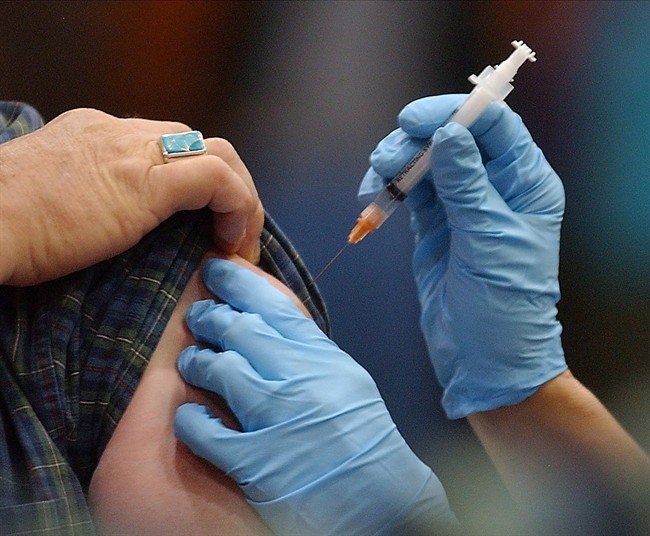If the past is any guide, 12,000 Canadians will be hospitalized with flu over the next 12 months, and 3,500 of them will die. Many, if not most, of those deaths are preventable.
The reason for this grim state of affairs is well known. We have a dreadful record when it comes to adopting the obvious solution: vaccination.
Roughly 40 per cent of Canadians are immunized each year — far below the target of 80 per cent, and well behind the experience of other western countries. The Netherlands and Britain consistently beat the 80 per cent target, and countries such as Spain, Italy and Ireland are close behind.
Worse still, our numbers aren’t improving; indeed, some provinces, sa���ʴ�ý among them, have seen a drop-off over the past decade.
Part of the problem is that members of the largest population group — those between 12 and 65 — often appear unmoved by appeals to get flu shots. Only one-third of the people in this group are vaccinated each year.
Their reasoning, perhaps, is that as healthy young or middle-aged adults, they either won’t get the disease, or are unlikely to suffer serious complications if they do.
And that might be true. But they’re forgetting the danger they present to at-risk individuals who might die if they contract the disease.
Included in this group are kids under five, adults over 65 and people with chronic conditions that make recovery more difficult. Cancer patients taking chemotherapy drugs are also in jeopardy, because their immune systems are compromised by the treatment.
The flu virus, like other infectious organisms, can propagate itself only if it finds enough vulnerable carriers to spread the disease. Hence the 80 per cent immunization target. Vaccinate that many people, and you box in the virus.
Smallpox was eradicated by this means, after a massive worldwide campaign. And polio is nearing its end. Across the globe, there were only 42 confirmed cases last year, with new outbreaks confined to just three countries.
It’s unlikely flu can be wiped out entirely in this way — the virus mutates too rapidly. In most years, the effectiveness of immunization falls short of 100 per cent. Even so, someone who contracts the disease after getting a flu shot is likely to suffer greatly reduced symptoms.
But the point for healthy young adults to consider is that you’re not just getting a shot to protect yourself. You’re getting it to protect the elderly woman you sit beside on the bus, or the toddler your child plays with next door.
Island Health is beginning an immunization program next month — you can find details at viha.ca/flu. And some pharmacies are already offering flu shots.
The treatment is provided free of charge to a large group of individuals, including children under five, seniors over 65 and people with various chronic conditions such as asthma.
However, this raises an obvious question. We want people in the low-risk group to get vaccinated, to protect those more in peril. Yet we charge these individuals, on average, $25 per shot. What sense does it make to place a cost barrier in the way of behaviour we’re trying to encourage?
Yes, there is money involved. At a rough estimate, it might cost between $10 million and $20 million to provide everyone in the province with a free shot.
On the other hand, the economic costs associated with flu (including lost productivity and hospital stays) have been estimated at $750 million a year in sa���ʴ�ý
In that respect, not only should everyone get a flu shot, but there is a powerful case for making the shots free.



